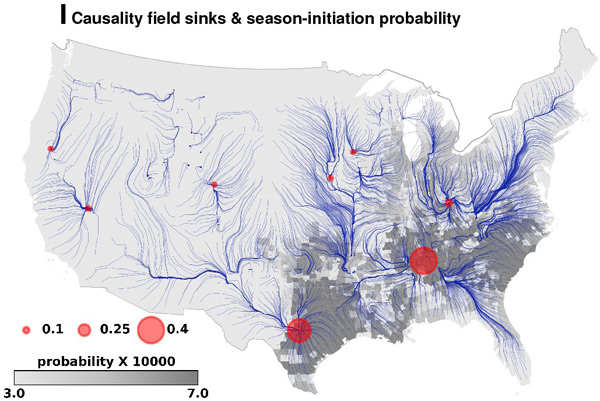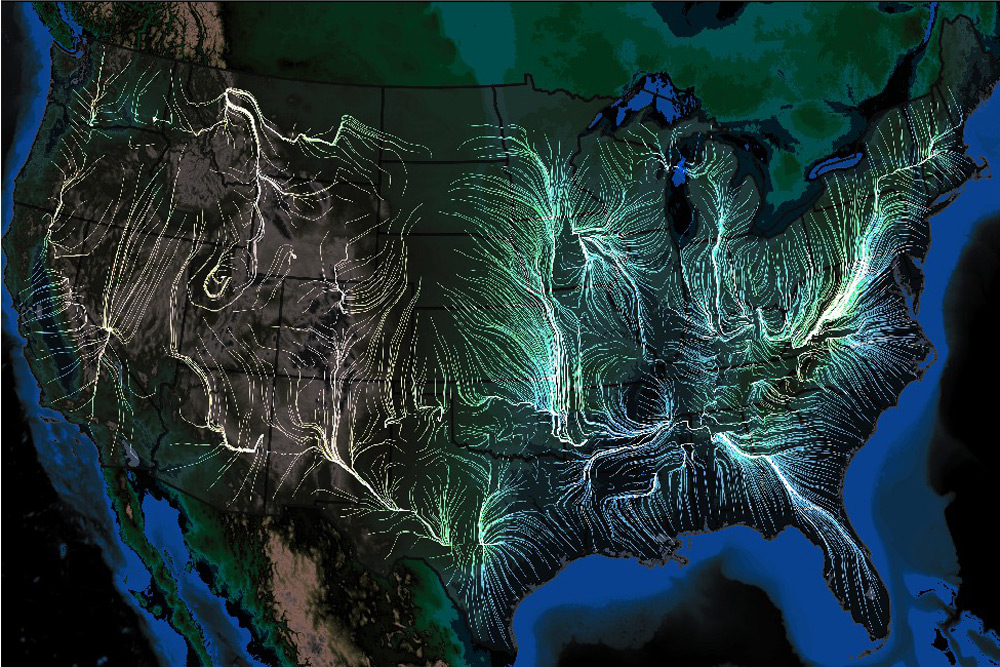Turns out the flu has a flight pattern.
Back in February, researchers at University of Chicago published findings drawn from scads of data related to the American flu season. Looking at health care records from nine flu seasons, they painted a picture of the disease's march across the country.
The researchers found that the illness tends to emerge in the southeast, and suggest that the region is a particularly susceptible breeding ground due its humid weather and highly connected communities.
Chicago asked Ishanu Chattopadhyay, the study’s lead researcher, some questions about his team’s analysis.
With weather playing into this, is this a silver lining to these miserable Chicago winters?
One of the things to note here is that infections do not seem to start from large population areas. So they do not seem to start from Chicago, they do not seem to start from New York City. Which is the first very surprising thing. If you just ask someone which place would be more likely to trigger an influenza epidemic, people might just go with common sense, and say ‘places which are more populated.’ But that doesn’t seem to be what the dynamic is. Once the flu season is on its way, you’ll have much more incidents as the population goes up, but that’s not where it starts from.
And for the weather thing, if you look at the most important factors—places with high mean maximum specific humidity, high average temperature, low average pressure—that’s kind of what is important. All these factors come together to create this perfect storm. That does not happen in Chicago. It only happens in the southern and the southern-eastern states.

Should you be leery of your friends at flu season?
I don’t know to what extent that particular effect directly contributes to the thing. Why is the South more socially connected? Maybe it’s warmer so people can go out and mingle more? That was what we thought of. But does that really explain the complete thing? If you think about New York City, people are always mingling because there are too many people.
Your study likens the movement of the flu to a forest fire. We all know from Smokey Bear that forest fires are preventable. Is the flu outbreak preventable?
If you cut down or restrict certain travel habits in certain seasons, you can do it. Whether that it is actually practical to implement or not is a different question. But the model that we came up with finally, which has 47 different variables—that is pretty accurate.
We had nine seasons of data, so we constructed the model with six seasons of data, held back three seasons worth of data and applied the model to see how well it does on out-of-sample data. And it does pretty well. The accuracy gives you an A under-the-curve of 80 percent, which is pretty good. So you can predict how the flu is going to move around in the country. If you know that then you can selectively try to manage the connectivity between different states, and that might interfere with the flu pattern quite well.
If that is the only concern—interfering with the dynamics of influenza—then yeah, sure, we can do it. The question is: are people willing to say: diverge air traffic or reroute certain things so that the airports which seem to be at a higher risk are avoided somewhat? That’s probably not really feasible. People are not that scared of influenza. If this was Ebola, yeah, all these things would be done. Now the truth is, every year, the number of deaths from influenza is—there are different estimates—roughly about 30,000 in the U.S. alone. That’s an incredible number. People don’t really realize how serious it is.
Are there certain parts of the country that have been flu-proof?
No. It gets everywhere sooner or later.




